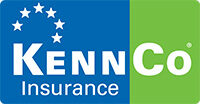If you’re a driver, you’ve probably experienced the moment when the dashboard warning light comes on. It can be a confusing and unsettling experience, especially if you don’t know what the lights mean or what actions to take. This article covers the most common dashboard warning lights. We will explain what it means and what to do when it comes on.
Understanding Dashboard Warning Lights
A dashboard warning light is an indicator that warns the driver of potential vehicle problems or malfunctions. When a dashboard warning light comes on, it’s essential to take it seriously and investigate it immediately. A light can be a simple reminder or indicate a serious problem that could lead to an accident or costly repairs.
Types of Dashboard Warning Lights

Modern vehicles have a wide range of dashboard warning lights, which can vary depending on the make and model of the car. However, some common warning lights include:
1. Check Engine Light
The check engine light is one of the most common warning lights, usually indicating a problem with the engine, transmission, or emissions system. The light could be due to something as simple as a loose gas cap or a more serious problem like a malfunctioning catalytic converter.
2. Oil Pressure Warning Light
The oil pressure warning light illuminates when the engine has low oil pressure. If the light comes on, it is essential to stop driving the car immediately and check the oil level.
3. Battery Warning Light
The battery warning light indicates that the car’s charging system is malfunctioning. The light could be a faulty alternator, battery, or wiring.
4. Brake Warning Light
The brake warning light illuminates when there is a problem with the brake system. It could be due to low brake fluid levels, worn brake pads, or a malfunctioning ABS system.
5. Airbag Warning Light
The airbag warning light indicates a problem with the car’s airbag system. If the light comes on, it could mean that the airbag will not deploy in an accident.
What to Do When a Dashboard Warning Light Comes On
When a dashboard warning light illuminates, it is essential to take immediate action. Here are the steps you should take:
1. Don’t Panic
While dashboard warning lights can be unsettling, it is important not to panic. Take a deep breath and focus on finding a safe place to stop the car.
2. Identify the Warning Light
Once you have safely stopped the car, identify the warning light and check the car’s owner’s manual to determine the issue.
3. Take Action
Based on the warning light, take the appropriate action. For example, if the oil pressure warning light illuminates, check the oil level, and add more if necessary.
4. Get Professional Help
If you cannot determine the issue or the warning light indicates a serious problem, seek professional help immediately. Driving the car could cause further damage or even lead to an accident.
Wrapping Up
Dashboard warning lights are crucial indicators that notify the driver of a potential problem in the car. By understanding what the warning lights mean and taking the appropriate action, you can keep yourself and your vehicle safe. Always be aware of your dashboard warning lights and take them seriously.
Dashboard Warning Lights
FAQs
Looking to Save On Your Car Insurance?
At KennCo, our car insurance cover offers competitive rates and valuable benefits, including a replacement car as standard. Get peace of mind knowing you’re fully covered.
Get a Secure Quote Today
Looking to Save On Your Car Insurance?
At KennCo, our car insurance cover offers competitive rates and valuable benefits, including a replacement car as standard. Get peace of mind knowing you’re fully covered.
Get a Secure Quote Today
